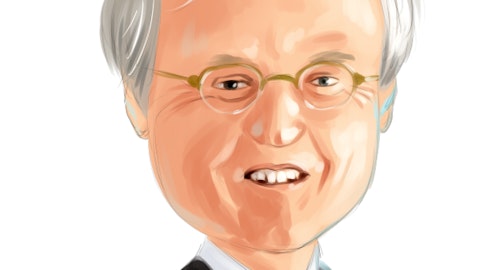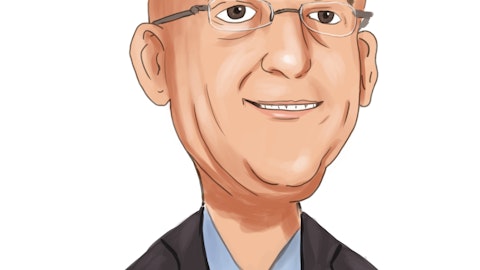Chris McComish: Matt, it’s Chris. To further speak to some of what Mark touched on. We’ve got a number of programs and initiatives that we’ve been focused on all around what we define as the health of our deposit franchise, which actually started before some of this rates up cycle just because we know that is how you define a customer relationship. So, we’ve talked in previous quarters about more talented people focused within the treasury management space. In addition to that, we’ve enhanced our product set for our customers as well as our delivery mechanisms, including some inside — what we would define as inside customer relationship teams that are very focused on proactively managing and growing these relationships.
We’ve got very strong customer loyalty and very high customer engagement. Those are not our words. Those are the words of those that measure these things. And so that gives us the opportunity to be having these conversations and be proactive in a trusting way to build on the most important part of the customer relationships that day-to-day operating account and operating business. And so that’s a big part of our focus. And you can never provide a complete direct drive as to one versus the other, but we know it’s critically important to us. That’s where we’re allocating resources.
Matthew Breese: Understood. And maybe along these lines, where do you expect for this interest rate cycle, the total cost of deposits to kind of peak out — or do you have a terminal deposit beta estimate?
Mark Kochvar: Well, as guidance, we look at how the last cycle panned out. We think we’ll do a little bit better than that just because we have a much better mix. So, last cycle, we were around 35%. We’re at 25% now. So, my best guess is about the middle there, so closer to 30%, when it’s all said and done.
Matthew Breese: Okay. And then, I know you had mentioned a near-term outlook for the NIM, it sounds like down 10, 12 basis points for the fourth quarter and the first quarter and then stabilization in the middle of 2024. Should that be kind of in the 3.80%, 3.75% range? Is that a fair estimate of where the NIM should stabilize?
Mark Kochvar: Yes.
Chris McComish: You’re good. You’re still on.
Matthew Breese: I got that last question there. Balance sheet is $9.5 billion. Obviously, there is the $10 billion threshold. I know we’ve discussed this in the past as being something that you could kind of — it’s not as close as it looks. I just wanted to get a sense or a reminder of, one, what the Durbin impact is? And two, at what point do you feel like will realistically be crossing that $10 billion threshold?
Chris McComish: The way we look at it, the Durbin threshold itself is quantified in that kind of $6 million, $7 million range. I mean we made $30-some million this quarter. That financial impact is things that we’re planning for to move through. We’re going to — we’re working every day to prepare for growth. And the $10 billion threshold is a number, and we know that it’s there. We’ve enhanced significantly our compliance and risk management capabilities and our team, all under the guidance of building a foundation for growth. We believe, organically, this is something that we’re going to celebrate as we get there, and we’re looking at some time in the next two calendar years, depending upon growth.
Matthew Breese: Got it. Okay. Great. I’ll leave it there.
Operator: Your next question comes from the line of Manuel Navas of D.A. Davidson.
Manuel Navas: Once you get to that kind of NIM stabilization point, do you guys expect the NIM to drift around a couple of basis points up, a couple of basis points down, or is there still maybe some residual pressure, or does it kind of turn up a little bit? What are kind of thoughts about that stage? It’s probably — there’s a lot of moving parts, but just kind of initial thoughts?





